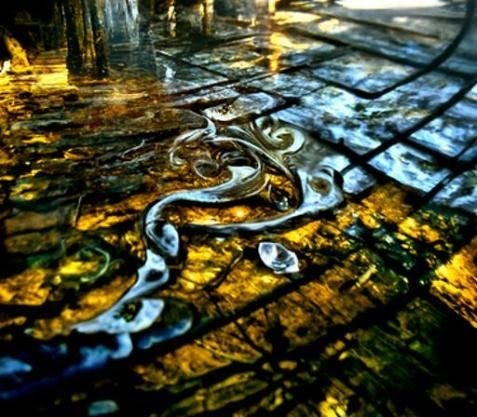Harnessing the magic of artificial intelligence, our generative art tools inspire, fuel and amplify artists. A self-driving car for creativity, Pixelmind allows collectors and creators to collaborate, creating unique one-of-one images and NFTs. This is only just the beginning.
The Experiment
The Pixelmind Generative Art Experiment began not with visual art but with words, namely Neural Language Models akin to GPT-3. Any of the newest language models, including open-source GPT-J, can generate text that passes (or comes close to passing) legendary British codebreaker Alan Turing’s “Turing Test,” which determines whether a machine can exhibit behaviors that convincingly mimic human responses.
By itself, a sophisticated language model working from a huge dataset of words can aid writers in something truly wonderful like eliminating writer’s block. People have also done some amazing experiments with GPT models—they include practical applications such as customer service chat programs and more imaginative uses like writing poetry, fiction, and news copy, and even programming code.
Mix that with something like Google’s open-source Deep Dream computer vision program, which essentially finds and embellishes image patterns (like faces) and fold it into an easy-to-use interface, and you’ve got a good idea as to what’s happening with the evolving Pixelmind Experiment.
What’s Next
Pixelmind is one experiment using available tools, and it’s mind-blowing to experience. Addictive even. It is currently getting a workout in dedicated Discord channels as well as early users of the app in pixelmind.ai. Career artists and users who might not consider themselves any kind of trained maker at all are issuing requests of the AI tools—for images portraying “a mansion in the clouds:”
…Or the “cold pallor of a dewy morning, the river snakes inward tracing its secrets into forest and new worlds alongside a marble floor.”
…And getting some striking, thought-provoking, evocative results.
As exciting and fascinating as this technology is, presenting an entirely new way for users to find their own inner artists, it’s only an early look at this unfolding experiment.
Writing before the launch of Pixelmind and its associated tools, CEO Adam B. Levine described a future scenario using the same kind of technological palette, but using sound as the medium:
Imagine: A performer stands on-stage with a microphone, alone. They begin to speak, describing a swelling orchestral piece. As they talk, the soundscape they are describing emanates from speakers surrounding him, with ambient sound and lighting that seem to follow his words.
Pixelmind empowers creativity in everyone. Once you realize that the barrier between you and your inspiration has lowered, who knows what might happen next?
Join us on Discord to learn more: discord.gg/DECKUCUxrn.
Follow us on Twitter to stay posted on updates: https://twitter.com/Pixelmindai.




